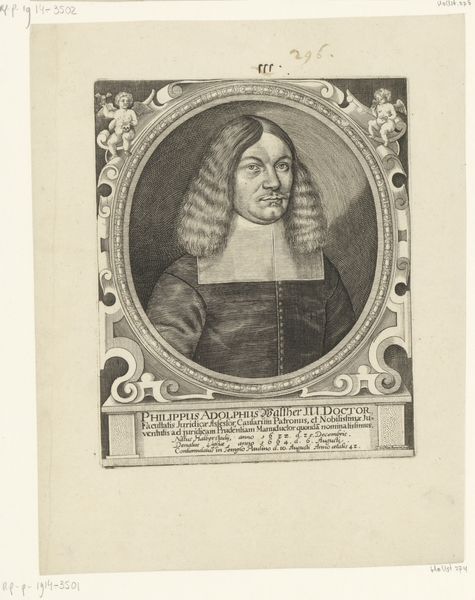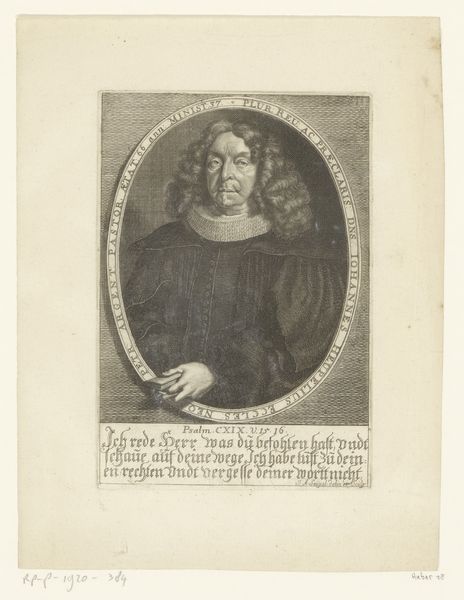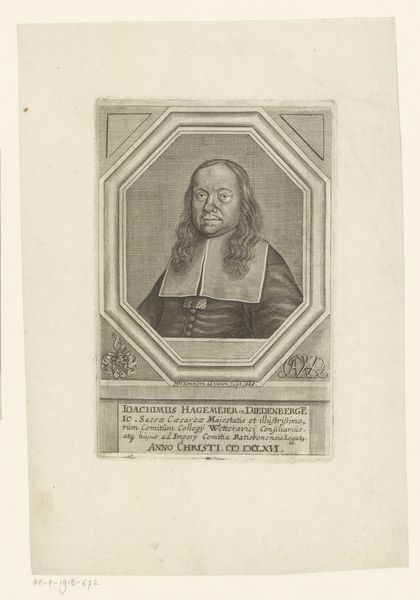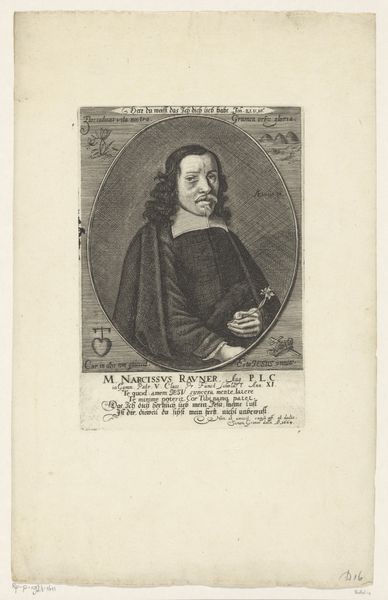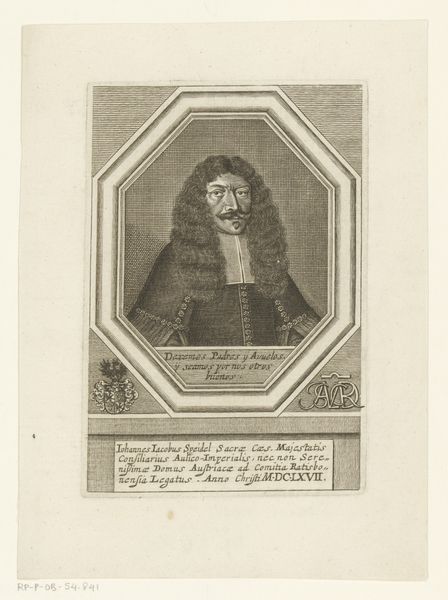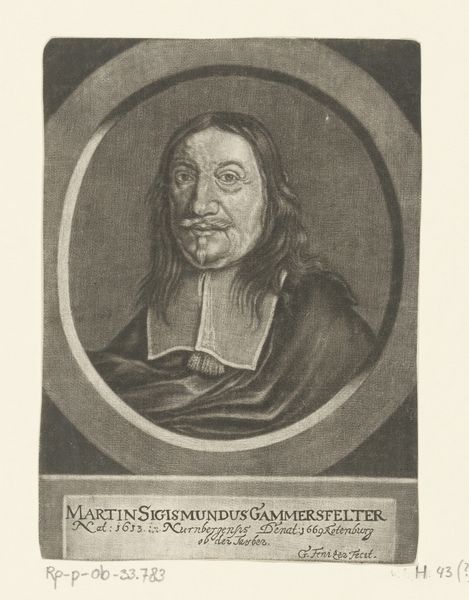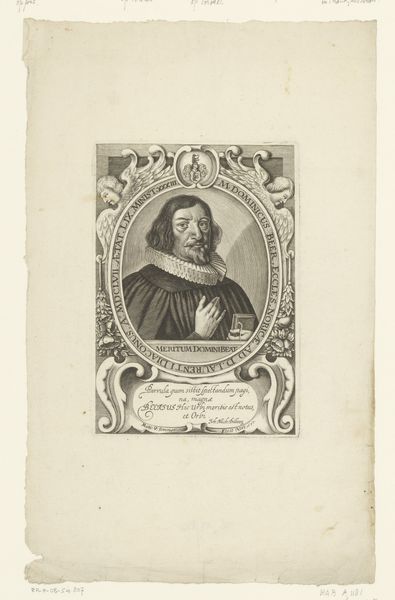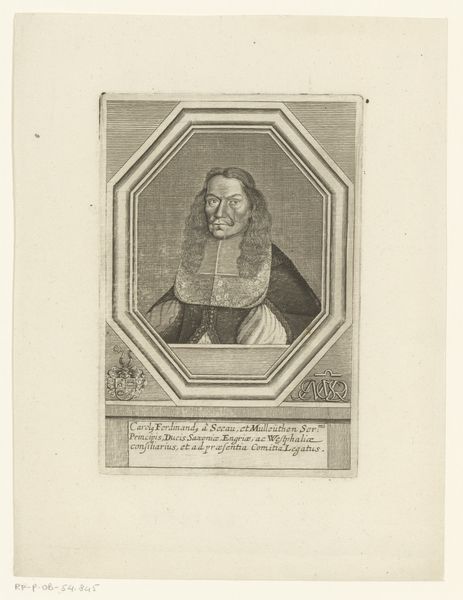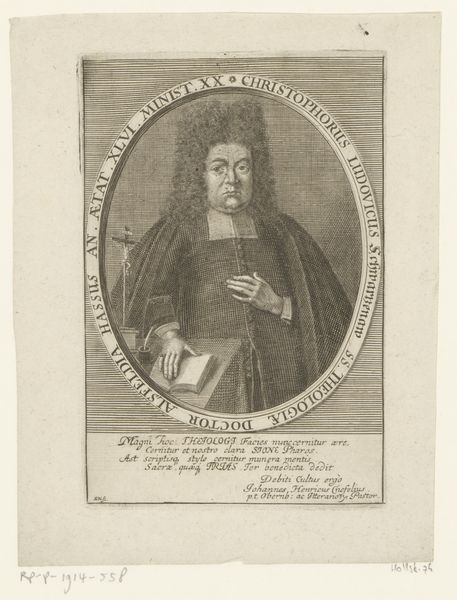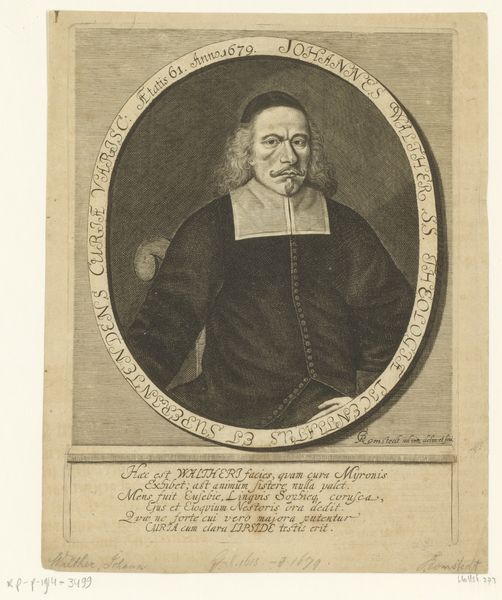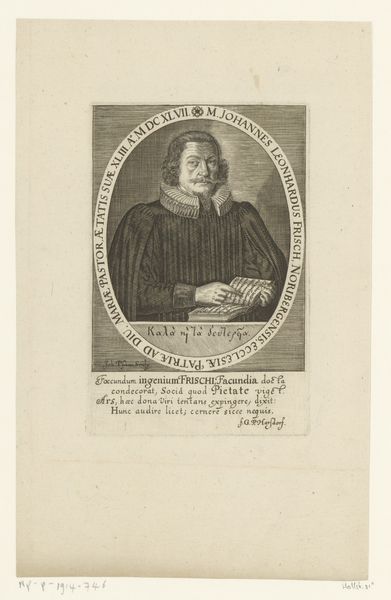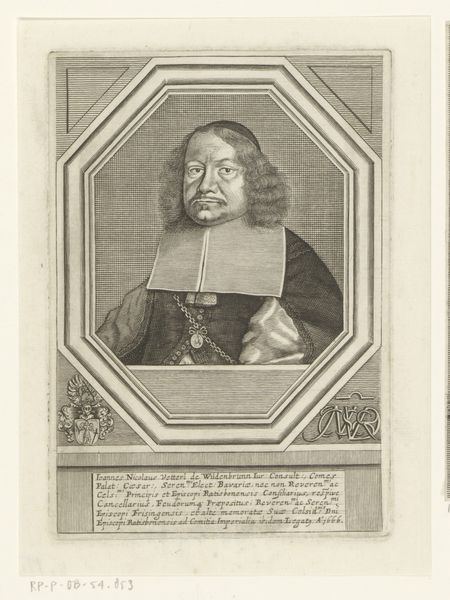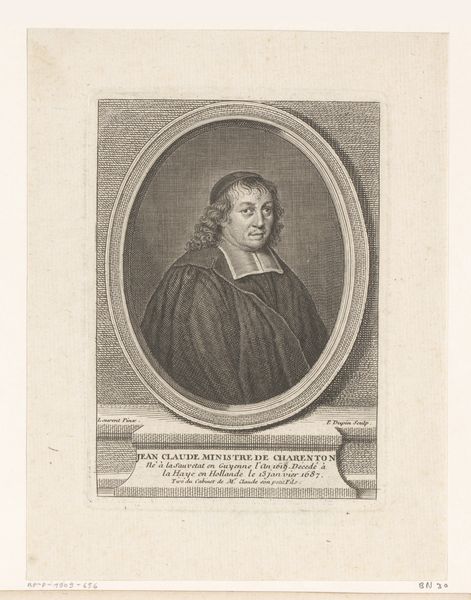
print, metal, engraving
#
portrait
#
baroque
# print
#
metal
#
history-painting
#
engraving
Dimensions: height 153 mm, width 103 mm
Copyright: Rijks Museum: Open Domain
Editor: This is Matthias van Sommer's "Portret van Humbert-Guillaume de Precipiano," a 1667 engraving on metal. It’s got such a formal feel, almost austere. What strikes you about it? Curator: Beyond its aesthetic qualities, let's think about how the portrayal of Humbert-Guillaume de Precipiano reinforces social hierarchies. What does it signify when someone’s likeness is reproduced in such a way, circulated via prints? Editor: I guess it’s about power, right? Being remembered… legitimized? Curator: Exactly! Prints like this, widely distributed, were tools to solidify power, disseminate images of authority figures, and reinforce their social standing. Consider his clothing, the precise details captured by the engraver, and even the Latin text surrounding his image. How do those elements support the construction of his identity? Editor: I see what you mean. The text kind of reinforces his accomplishments and status. Curator: Yes, but I also wonder, in what ways does the choice to create an engraved print--a multiple--democratize the image while simultaneously reinforcing an elitist agenda? Do you think access to the image challenged or reinforced the system? Editor: I hadn’t considered the element of accessibility. Hmmm, it is tricky to unpack both intentions, legitimization and dissemination. Curator: It certainly is. Remember, art is never created in a vacuum. Examining art through a social lens invites critical interrogation, enabling us to understand not only its beauty but also its profound historical weight. Editor: I definitely see that. Looking at it as a political statement, it does reveal a lot more than just a portrait.
Comments
No comments
Be the first to comment and join the conversation on the ultimate creative platform.
